Yoshi Month doubles this week: let’s see the two Nintendo DS titles… and why reduce this retrospective at the same time
Well yes, after several single articles to be called “back-reviews” (even if in some cases we have not reviewed anything), our pre-Easter retrospective titled Mese di Yoshi returns to provide a slightly more global look with the other titles released on Nintendo DS. In this case, although with the remake of Super Mario 64 we had to make an exception, we are not talking about mustache games in which the nasal-voiced lizard also peeps out. Today we will devote ourselves to two titles for which, unfortunately, it is not necessary to dwell in a particularly exhaustive way. This certainly does not make them any less important.
We will start with Yoshi Touch & Go, a title that marked the launch phase of the console, and which as such was one of the many games of the Grande N to focus particularly on the touch screen. Next, another game awaits us that had to scale back its ambition by passing through the registry office before day one. Developed under the high-sounding name Yoshi’s Island 2, today’s second protagonist is actually Yoshi’s Island DS. Two titles that correspond to two ways of understanding Mario’s narrative childhood, and that both are “fuochino and fuocherello” without ever really moving away from the water.
Skydiving and ground stage, years before Fortnite – Yoshi Month: Nintendo DS Retrospective
If you had read the last episode of the Month of Yoshi, you would believe that the opinion of whoever is writing to you always hangs from the metaphorical lips of Nintendo the Official Magazine: despite having some tastes in common with dear old Magiustra, the undersigned does not necessarily agree with the votes he bestowed, as you will discover during this retrospective dedicated to the Nintendo DS duology. The final verdict rewarded the game with an eight at the time, but that of Yoshi Touch & Go it is a purely “political” vote. Read: given away (this time, of course). The localization notes in Italian speak of “a few lines of text”, but why?
In case you haven’t put two and two together, there is no plot here. The title screen consists of the flight of the stork with the bundle of Baby Mario in its beak; once the method has been chosen, Kamek attacks it, bringing the baby to fall. In a nutshell, it is a reinterpretation in sauce arcade of the premise of Yoshi’s Island, with the difference of an additional introductory phase in which we will guide Baby Mario towards the ground with the stylus. The task is to protect it from enemies thanks to bubbles in which the player can lock them up. Between that and drawing a trail of clouds to carry the infant on Yoshi’s back, there’s really nothing else to say.
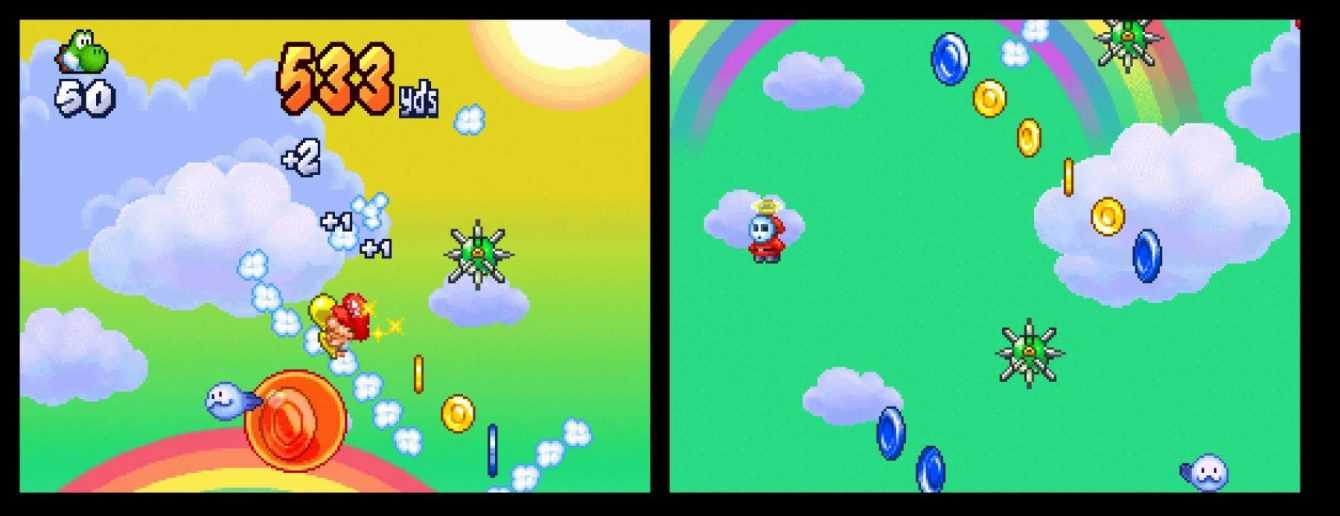
Canter not too much, more trot – Yoshi Month: Nintendo DS Retrospective
Given the complete lethargy of the gameplay during the first phase, it is natural to wonder if the second half of the levels does justice to the hilarious solo debut seen in the first Island. And we would also like to say yes. Unfortunately, the inebriated expectations of the legendary and well-loved 1995 platformer crash crashing into the wall of a runner where our only task is… to do practically the same thing seen during Baby Mario’s descent. In other words, we will have to create bridges, blow them away if necessary, “bubble” enemies and very little else.
The development team later admitted that they created the game with the intention of recreating the typical gameplay loop of arcade games, which is the reason behind NRU’s many praises for a “perfect for waiting for the bus” kind of experience. The four modes change the cards on the table slightly. The mode In points is what we have described so far. Marathon combine that with the random generation of an infinite ground phase. Timed asks us to accelerate with the slopes to reach (and harass) the kidnappers of Baby Luigi and, finally, Breathless asks to stock up on coins and eliminations to cope with a tyrant timer. Question: why an 8 to this, and only a 9 to Super Mario 64 DS a month earlier from the same editor, given the premises? We will never know.
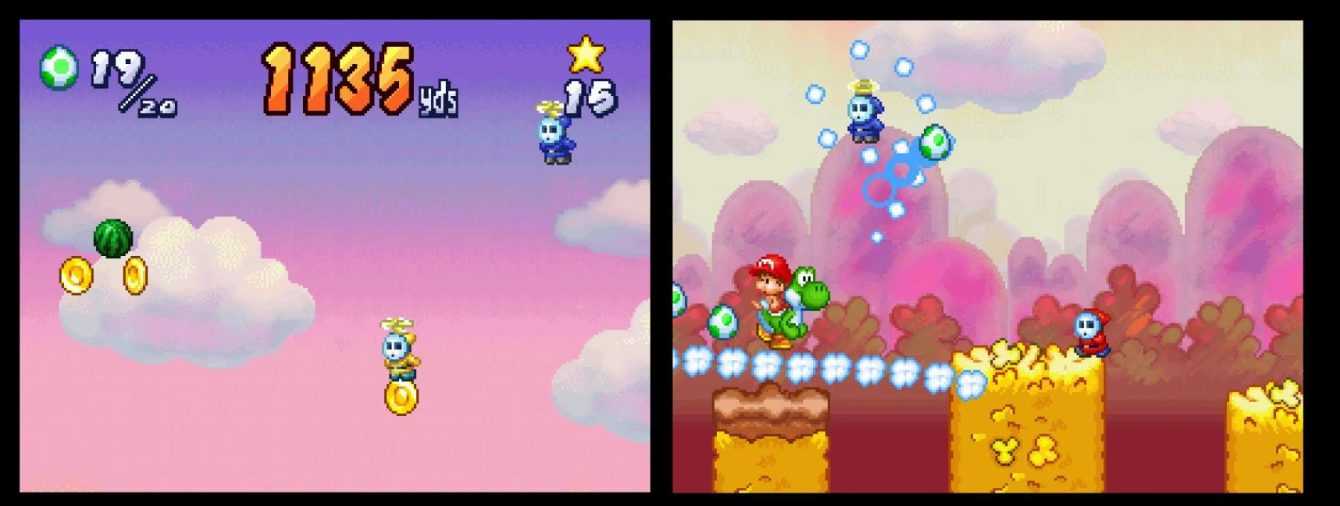
Tied Eight – Yoshi Month: Nintendo DS Retrospective
Clearly not all of our retrospective, if it is not clear just one week before Easter, will be able to dedicate a space to all the games with “the sorrel” as the protagonist. We skipped, and not without knowledge of the facts if we have to say, the crooked puzzle-platformer for Game Boy Advance, known to us as Yoshi’s Universal Gravitation. It is, quite possibly, the only GBA game that makes use of motion controls to arrive in Europe, while those lucky overseas gamers said goodbye to the console with that masterpiece that was WarioWare: Twisted!. Lucky them…
Of the game, however, we keep the development team good Artoon: apparently Nintendo must have been well impressed by both Universal Gravitation and the other exploits of the developers (including Blue Dragon and Blinx: The Time Sweeper). If nothing else, it would be inexplicable otherwise than the confidence with which Artoon has been placed with the onerous task of developing a sequel with a capital “S” for Yoshi’s Island. Or rather, Miyamoto actually had nothing in mind before the development team stepped forward. Be that as it may, a year later, Mattia “Zave” Ravanelli rewarded with an eight (this time more deserved) Yoshi’s Island DS on NRU issue 60.
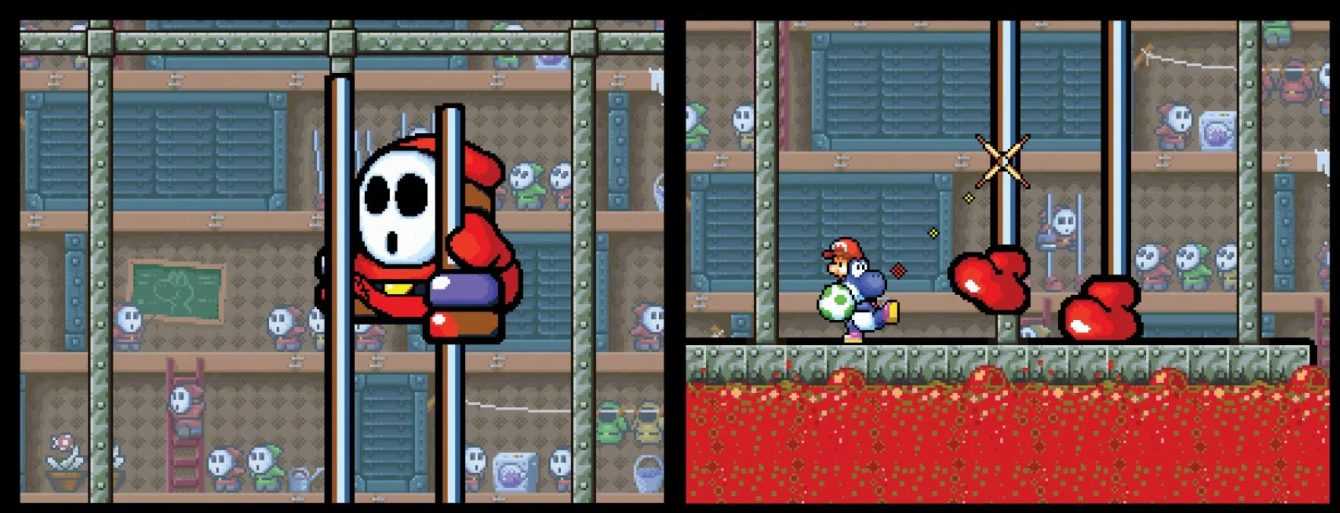
Where We Were (Not) Left – Yoshi Month: Nintendo DS Retrospective
The plot of the game, if we are to avoid the narrative insult to the original that was Yoshi’s New Island on 3DS, sees Kamek kidnap Baby Mario and some of his conscripts from their homes. The bizarre (and, at the same time, ingenious) reversal of the premise consists in the attack that the stork reserves for Kamek and his Minions, with which Baby Mario falls on the Yoshi island in the company of Baby Peach. The most sensational changes, leaving out the narrative links between the children as “Star children”, are mostly about the gameplay hard and pure. At the end of the game, the adult Bowser from the future takes over, but he does so in context (unlike, again, the 3DS interquel).
Beyond the “broken” framing that has characterized so many platformers on Nintendo DS (such as Sonic Rush, ironically years after an offshoot of its development team founded Artoon), the most burdensome change consists in the stork stations. More often than not, the levels give us the opportunity to change (quite literally) the babies we carry with us. The trio that can be used in most levels consists of Baby Mario (with which to run and hit the blocks exclusive to him), Baby Peach (for better planing) e Baby Donkey Kong (to use lianas and throw eggs with more force).
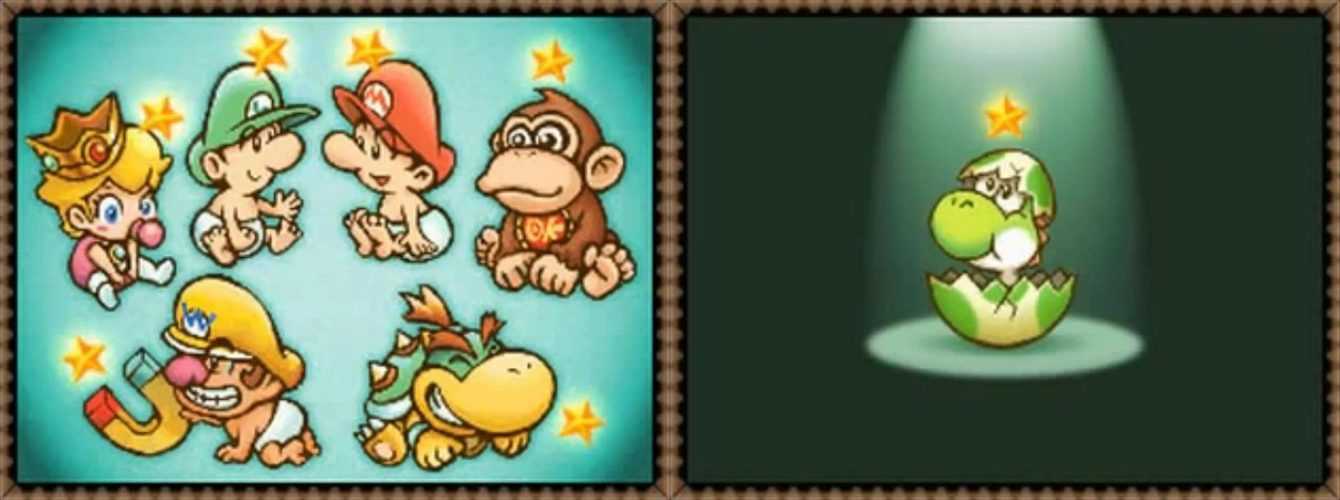
Pests from Birth – Yoshi Month: Nintendo DS Retrospective
In some levels, the game also offers us two exceptional babies. Baby Wario, which together with the infant counterpart of Donkey Kong is one of the least reviewed “babies” in the world of Mario, is the first. In fact, with him we can attract coins and steel blocks that otherwise Yoshi would not be able to move, thanks to the magnet always with him. It must also be said, of course, that in addition to having the least suitable design to be seen shortly after birth, Baby Wario also boasts the most unbearable cry when we are hit. An incentive like any other to play properly. Especially with the skyrocketing challenge rate when we unlock this baby!
The last one is none other than Baby Bowser, which becomes “playable” in more bearable conditions than in the first half of the final showdown of Yoshi’s Island. Once the Bowser of the future (i.e. present) enters the game, in some levels Baby Bowser also takes over as the baby to be driven. And it is thanks to him that it is possible to attack with the characteristic fiery breath of the King of the Koopas. With this variety, we’ve talked a lot of good things about the game so far: why make him share the same article with Yoshi Touch & Go, then? Well, roses also have thorns…
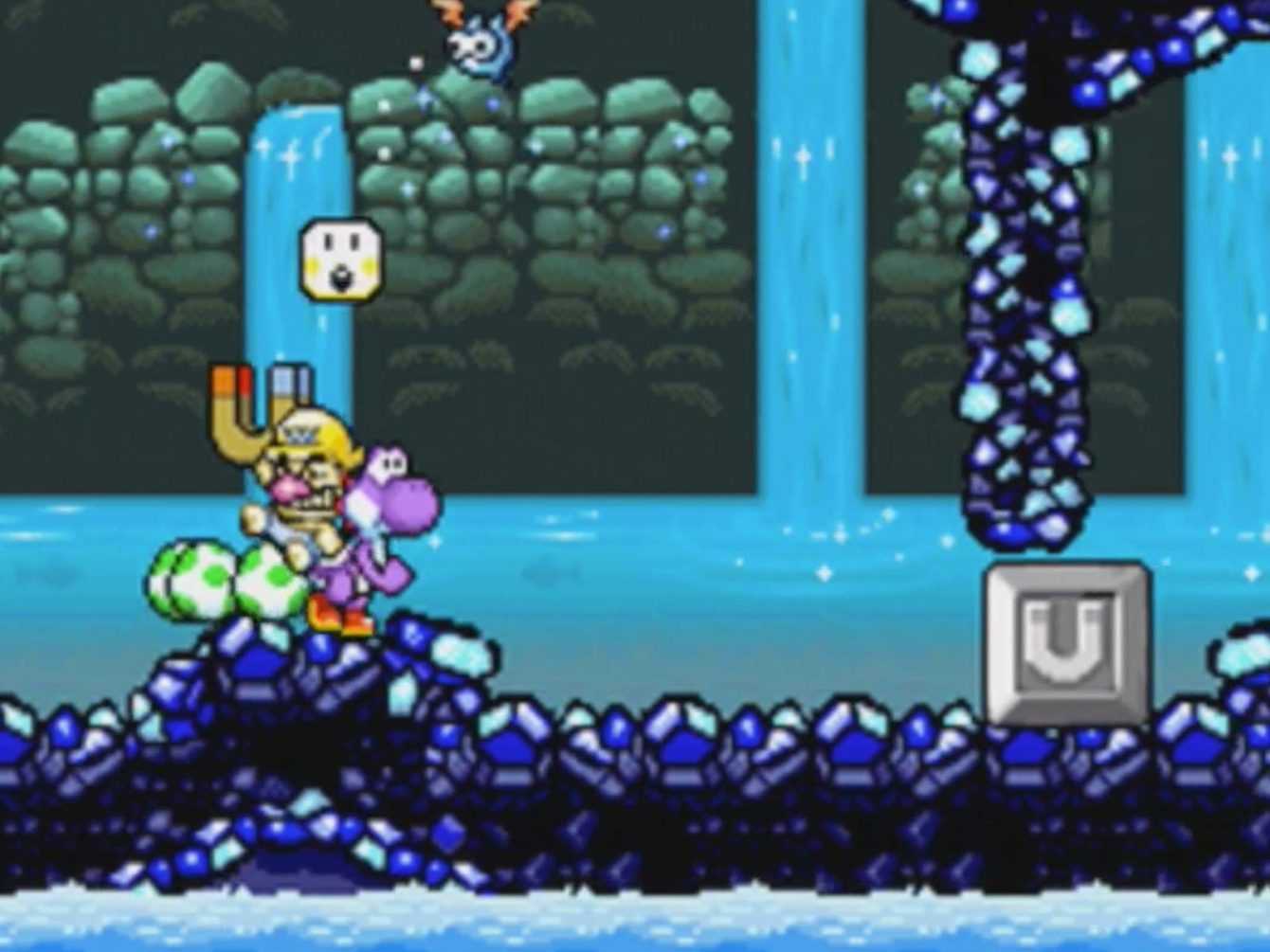
Good but not great
The births of the game outside the maternity ward of the Grande N can be guessed on several fronts. First we have a general flow of gameplay which for some reason is simply not the same one we loved in the second installment of this column. As for the art direction, we have some questionable choices in terms of graphics (those who have known the “kangaroos” of the game will already be nodding) e sonorous (with some really anonymous tunes). Which is a shame, considering that it was the artistic aspect that was the most successful of Touch & Go. If the two games exchanged eye and ear stimuli, we could probably get a jewel.
Similarly, implementing new features without having fully learned what made the original Island so loved has led Artoon to make huge mistakes in calibrating other aspects, one above all the difficulty. Despite the linearity with which the levels follow one after the other, there is nothing organic in the player’s learning curve: sometimes the levels seem trivial, other times you tear your hair out just to proceed to the screen next one. A true Sinbecause otherwise the excellent premises for the expansion of Yoshi’s world into a real “prequel universe” would have all been there.
- Easter Egg: The surprises, this time, are all for Yoshi Touch & Go, if you want to lengthen the broth. When Baby Mario lands on the Touch Screen, you can tickle him before he lands on Yoshi’s back. Surround two coins with a bubble to get a blue one, which will give you more points. Doing so will also change the color of the Yoshi waiting for Baby Mario on the ground, which brings with it abilities such as a higher maximum number of eggs.
Now it’s up to you to tell us yours: were we too tough? Let us know below, and as always, don’t forget to stay on tuttotek for all the most important news for gamers and more. For your purely gaming needs, you can instead find the best discounts in digital format on Kinguin.






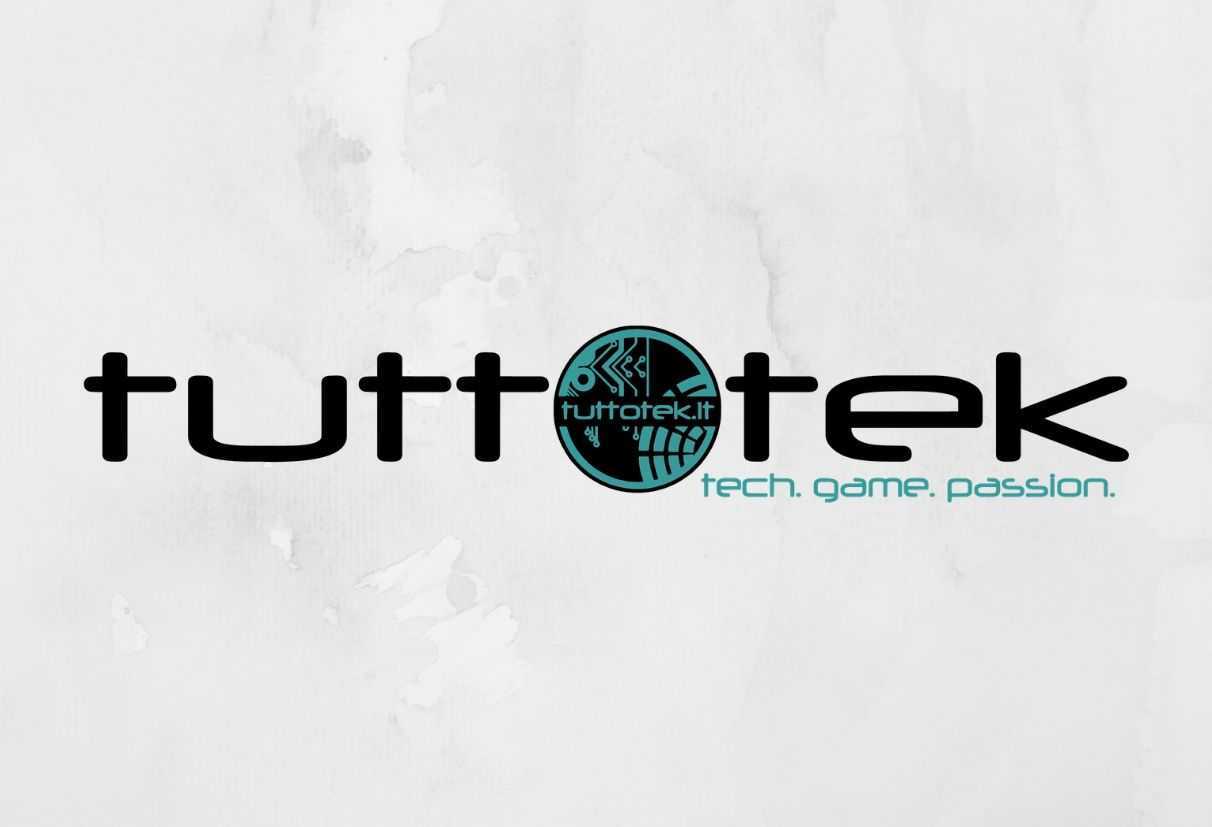






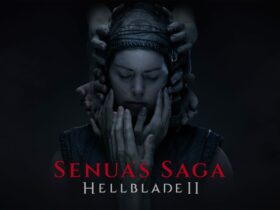
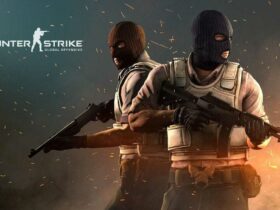
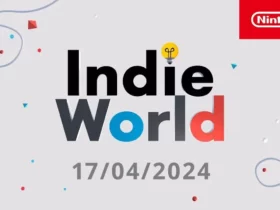
Leave a Reply
View Comments